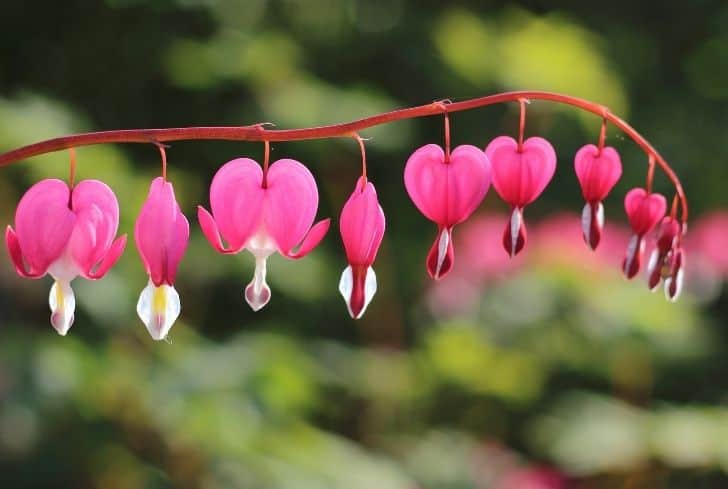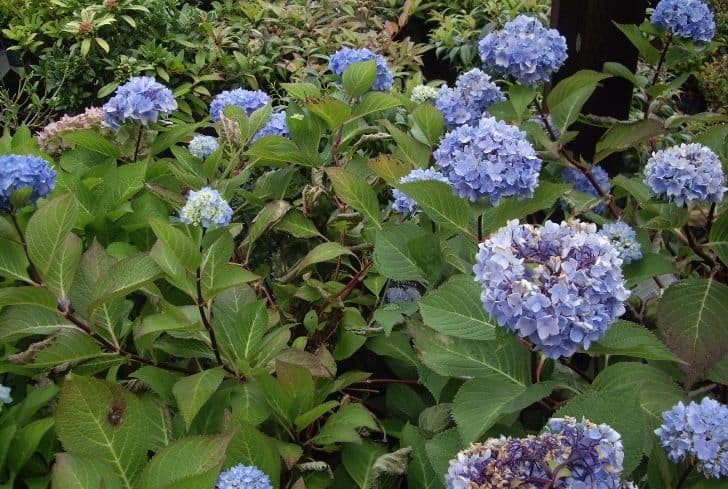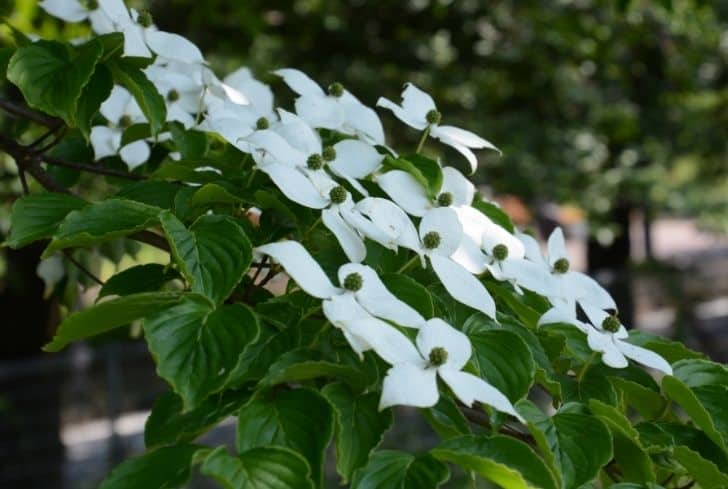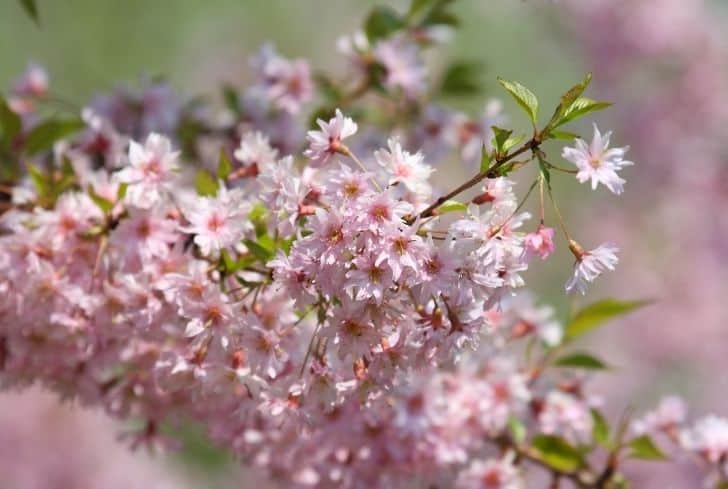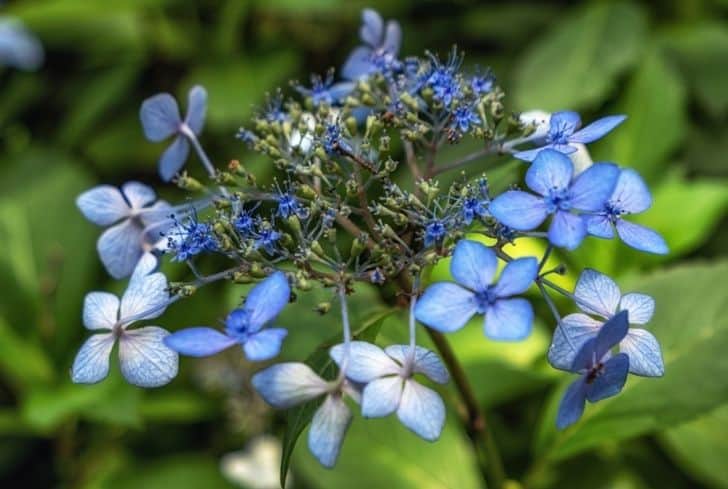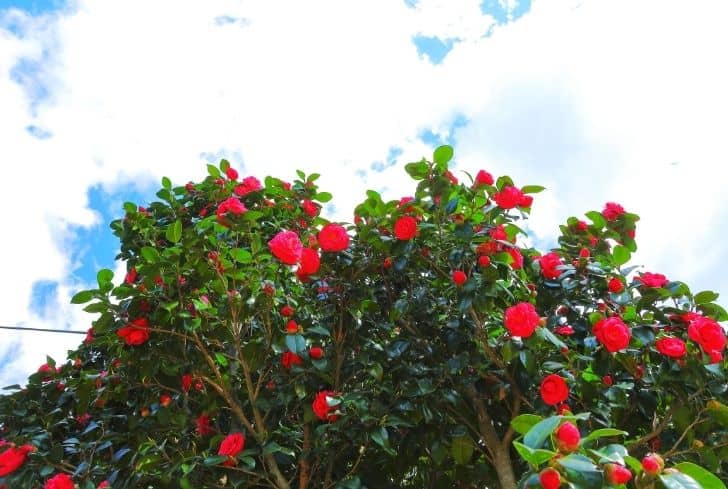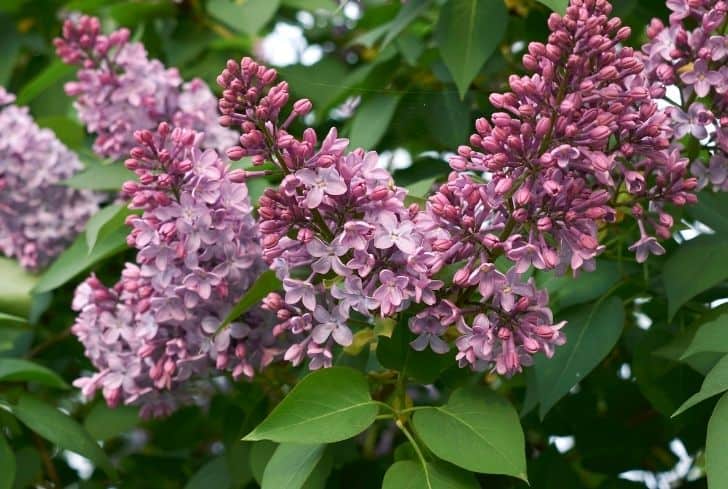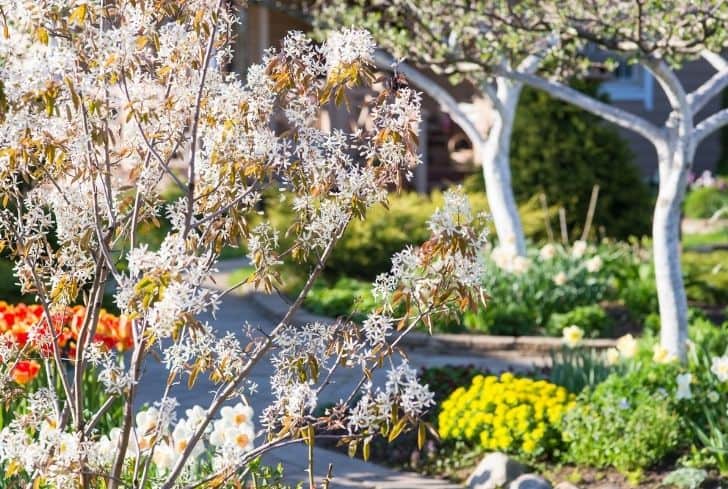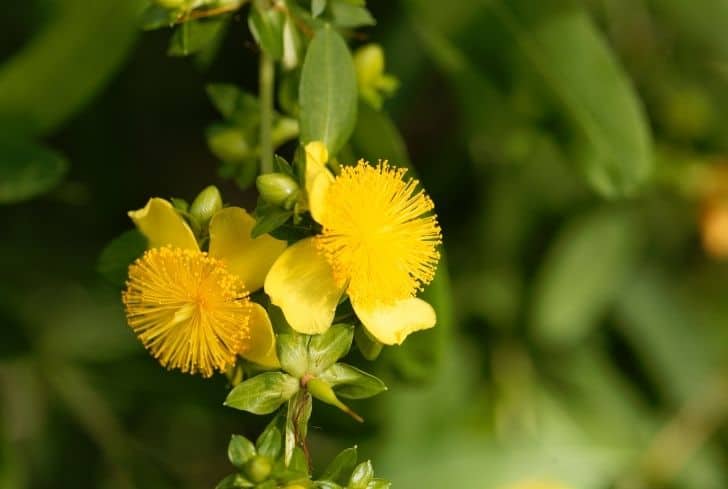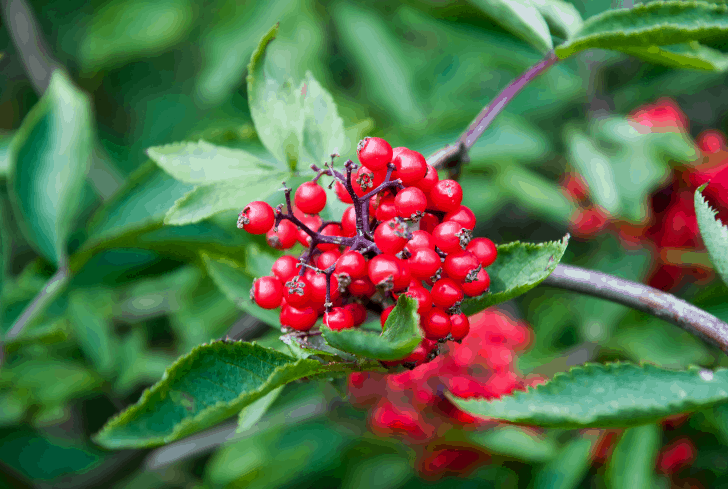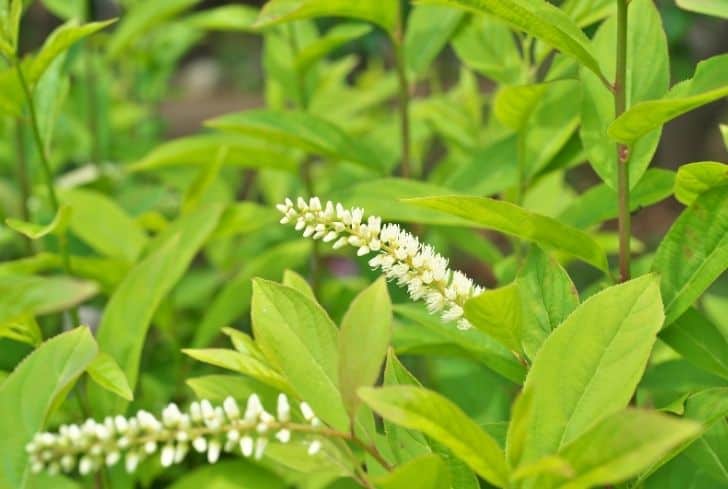Did you know that all kinds of plants thrive well at a particular temperature? Are you wondering which plants fit well in a particular temperature range?
You must first know that every shrub species has its own liking and characteristics. Being aware of its needs can help extend the life of your plant and keep it in the best condition.
This article covers all 11 shrubs that grow best in Zone 6 and how to maintain their growth and fertility.
Finding your zone/Which Zone are you in?
Zones are the specific temperature associated with your area. You can check your zone area by visiting the USDA Plant Hardiness Zone Map- By entering your Zip code, you can determine which zone your area comes under. These guidelines are designed to select plants suitable for its zone all year round.
Attributes of Zone 6
Zone 6 falls under the temperature range of -10º to 0º F. Hence, it is divided into two types with a 5º degree difference: Zone 6a and Zone 6b.
- Zone 6a: Temperature between -10º to -5º F.
- Zone 6b: Temperature between -5º to 0º F.
A variety of shrubs, flowers, fruits, and trees grow best in zone 6 with a medium-time frame. You can start planting seeds from March onwards and set the plants outside after observing the shoots.
Here are the 11 top shrubs that can provide shade in your garden.
Some of the top 11 shrubs that can grow in Zone 6 include:
1. Blue Enchantress Hydrangea
This stunning beauty is a collector’s dream and a must-have for every gardener. The name “enchantress” is used for its beauty and textured shades. It blooms both in the old and new growth without the need for pruning. The bold blue flowers grow in acidic soil. Otherwise, they bloom with a pink color under alkaline soil.
They are ideal for patio containers or foundation design. It is an excellent shrub with an accent and pattern at the base or border. It can be beautifully paired with shade-loving perennials since it grows best under the partial sun.
It can grow up to 5 feet tall and 6 feet wide, and the flowers can last long if they are protected from the harsh sun. At the start, it produces white flowers. However, once the shrub matures, it produces the blue flowers.
The soil needs to be kept moist but at the same time well-drained. With careful maintenance, this shrub is a great re-bloomer for summer and springtime. Similar species can display a cream color with slight green at its corners. Avoid harsh sun in hot places while frequently applying spring fertilizer.
2. Kousa Dogwood
Dogwood trees are known for their delicate beauty and go by other names such as Chinese dogwood, Japanese flowering, and Japanese strawberry tree. They add visual durability, making this species the best choice for home landscapes and urban areas.
Once fully grown, this tree provides firm support throughout the year, including wildlife. In spring, it creates a heavenly array of star-like flowers. In summer, the stunning canopy of layered branches offers shade for birds and insects. In autumn, it gives a beautiful red color to its fruit.
The spring flowers are the tree’s biggest selling point. They are small, greenish-yellow, and pale flowers with modified leaves called bracts displaying a form of flakes.
About suitability, you’ll also be delighted to learn that Kousa Dogwood can be planted in 5–8 hardness zones.
This tree is a flowering and ornamental tree, usually planted for the interest of vision and the spread of spring flowers. Kousa dogwood grows to 15-25 feet tall and matures in 25 years.
The sun preference is from full to partial shade, while the soil should ideally be acidic. The shrub is drought-resistant and grows best in loamy, sandy soil. The leaves turn purple and scarlet during the fall, and the pinkish fruit attracts songbirds.
3. Flowering Crabapples
This shrub is also known as Malus or wild apple. It can grow in zones 4 to 8 and reach a height of about 6 meters tall. It’s known for its spectacular display of flowers in the spring with reddish apples. It grows into a small stature and forms unique tree shapes that can last years.
Depending on the type of seed, the shrub can display various shades of fruit colors, from lime, yellow, golden, pink, orange, crimson, or even purple. The fruit can be as large as 1- 5 cm or as small as 0.3- 1.3 cm.
In the fall season, you can observe colors of golden-yellow, orange, and red before they shed to the ground. These colors can last for months and make your environment feel magical.
Crabapples do not have a specific blooming stage. Their petals can last for a 4-5-week period. Some have the fragrance of apples, cinnamons, or even cloves, and this can smelt over long distances.
The large crabapples can grow up to 40 feet tall with a width of 20 feet, depending on the species. We recommend getting the smaller crabapples as they fit in all places, from the home patio to any small garden.
However, before you bring this type of tree into your home garden, keep in mind that crabapples are susceptible to diseases, signs such as defoliation of leaves, weakening of trees, and rust on the bark are some of the major appearances. Ensure you select a disease-resistant crabapple.
4. Hydrangea Serrata
Commonly observed in places such as Japan and Korea, the Hydrangea Serrata is also known as mountain Hydrangea. The shrub contains lace cap flowers that bloom from early to late summer.
This plant is known to have the characteristics of changing color every season and can grow up to 4 feet tall. It does best in zones 6-9, but ensure that you plant it in well-drain soil with rich moisture.
The color changes depending on the soil pH level. In acidic soils, the plant produces blue flowers. However, if your soil is basic, you can expect pink flowers instead. One of the great properties of this shrub is that it lacks any form of pest or disease problems.
5. Camellias
Camellias are common in Japan and can reach heights above 25 feet tall. The shrub falls between 6-10 zones. It does best in slightly acidic soil and will show signs of stress by turning the leaves yellow if the soil has a high pH level.
The plant can bloom for weeks, from winter to spring, producing a wonderful fragrance. That’s to say, if you’re looking to impress your guest, then Camellias species will turn your garden into heaven! There are lots of species, though, but they’re all great!
6. Syringa Vulgaris
Popular for its fragrance, Syringa, also known as Lilac, is easy to grow with a tough resistance to pests. It blooms in late spring for one month with a range of colors- white, red, magenta, purple, and cream. The flowers are concentrated at the tip of the shoot and are about 20 cm long. Depending on the type of Lilac, this shrub can grow from 4 to 15 feet tall.
The shrub thrives best on good drainage and fertile soil. It can grow in alkaline soil with full sunshine once they are fully mature. They need a long winter period for buds to grow and bloom in spring. For that reason, zones 3 to 7 suit all types of Lilac species.
7. Dicentra
This shrub is also known as a bleeding heart due to its heart-shaped flowers hanging above its leaves. They are rhizomatous plants that bloom for a long season. The ideal soil pH for this plant is alkaline and grows best in clay, loam, and sand.
You can grow shade-loving plants along with Dicentra to give an elegant presentation to your garden. They can bloom in full sun if you keep the soil moist. And once you plant it, don’t be surprised to see hummingbirds and butterflies visiting your home; they love this shrub!
8. Shadbush
This shrub goes by other names like Serviceberry, Shadwood, and Amelanchier. It requires the soil to be consistently moist with a neutral to acidic pH level. It can grow between 10 to 25 feet tall, while some can grow up to 40 feet.
The irregular branching can cast light shade, while their roots are not invasive. As such, you can plant other low shrubs under it. Serviceberry provides year-round flowers of white, yellow, red, and gray with yummy purple fruit.
9. St. John’s wort
This shrub falls under the Hypericum prolificum family and grows best in zones 4-8. It grows up to a height of 5 feet tall. It grows into mound-shaped branches and forms yellow foliage in the fall. It has big, yellow flowers that can grow alone or in groups. The dry seed pods with three valves last all through the winter.
This plant can handle different levels of water and can even survive floods. It doesn’t usually suffer from diseases or pest problems and likes soil that’s a bit alkaline, doing incredibly well, especially on sites with limestone.
You can plant them in groups along the edges of your garden, and they can be shaped into a hedge. They’re also helpful for keeping lakes stable. You can grow new plants from their seeds, but sometimes, lightly trimming their roots at the beginning of the year is sufficient.
During its blooming time, it will surprise you by attracting buzzing pollinators around it.
10. Red chokeberry
This is a native shrub in North America with tall, multiple white flowers, bright red berries, and red fall colors. Red chokeberry is a tough and reliable plant for three seasons of interest, mainly in shady, humid places. It works well in a natural landscape or garden and can grow up to 6 -to 8 feet high and 3 to 5 feet wide.
The bright green leaves turn red in the fall. The flowers are more abundant with sweet and edible fruits. It grows best in moist soil but dries out once it is mature.
Even more, it adapts to the part-time and full-time sun. But then, one thing you must remember is that allowing full sun increases the fruit production stage.
Keep it behind the border because the plant will be bare on the lower stem. You can start pruning in spring during flowering while cutting off unnecessary suckers to control size.
The bark shows a beautiful reddish-brown color to grayish brown with time. If you look forward to seeing full red, bright color leaves, the Red chokeberry species will amaze you during fall.
11. Itea Virginica
Itea Virginica, commonly known as Virginia sweet spire, is a rounded, broad, deciduous shrub usually 3-4 feet tall. The species derives its name from the Greek word willow, which refers to some willows with leaves or clusters.
The fragrant, small white flowers are cylindrical with vertical drops in one stem, covering the bush from late spring to late summer and blooming from orange to golden in autumn.
It has been found to grow in moist forests and streams and is suitable for moist, organically rich, acidic soils. Regularly water during dry periods to maintain good soil moisture for good growth.
Add a layer of organic mulch to control the soil temperature and retain moisture. Pruning only during flowering time. During the fall, the leaves’ color varies from a mix of yellow, orange, purple, and red.
It is a versatile shrub for sun and shade areas. It grows well in wild or uninhabited areas. A great choice for damp areas like low spots or pool/stream margins.
